Pop-up card : the buildings in Haiti
I updated the pop-up card, the buildings of Haiti.
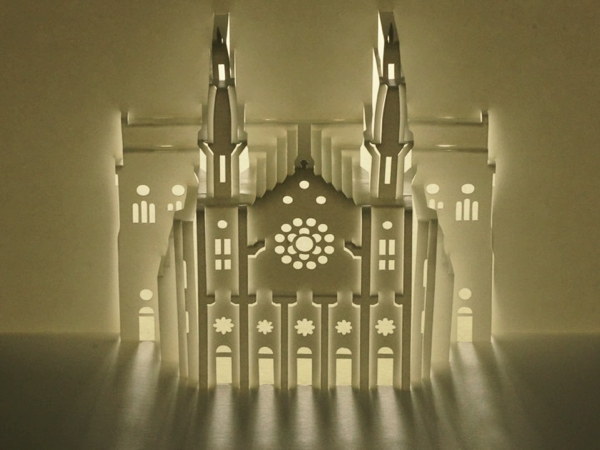
The model of this pop-up card is the Port-au-Prince Cathedral in the capital, Port-au-Prince. (Sometimes called Notre Dame Cathedral.)
Many buildings were damaged by the Haiti earthquake that occurred on January 12, 2010. It seems that the number of deaths could not be accurately grasped, and at that time, different numbers were announced within the government, ranging from 200,000 to 230,000. As of 2011, the prime minister announced that there were more than 316,000 deaths, but it is difficult to get an accurate figure.
An article was published in National Geographic about 10 years after the Haiti earthquake.
‘Things have gotten worse’: Weary Haitians approach a somber anniversary
(The quotation)
Instead, ten years later, Haiti remains a long way from recovery, mired in political conflict that has bankrupt businesses, soured the economy, and dampened the enthusiasm of foreign donors who once rushed to help with its reconstruction.
While the rubble and makeshift tent cities that once blanketed Port-au-Prince are gone, some have turned into permanent settlements with no power, no sanitation, no security, for more than 32,000 quake survivors.
Two of the country’s most iconic structures―the cathedral and the presidential palace―still have not been rebuilt. And six years after construction began on a new $100 million public hospital, promised by the United States and France, the complex emains an empty shell, the work temporarily halted due to a dispute over money.
(The end of quote)
If you search for images on “Port-au-Prince Cathedral", you will find many pictures of the cathedral that has collapsed and has only walls. In addition to that, there are still many photos before the earthquake collapsed, so I made this pop-up card with reference to those photos.
The paper pattern is open to the public, so please use it if you like.
Then, here is another pop-up card. This is the National Palace (Presidential Palace), as also be mentioned in the above article of National Geographic.
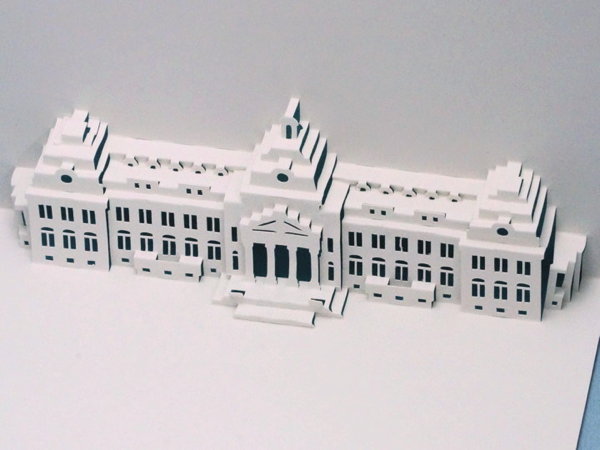
At first, there was a plan of restoration, but it was abandoned and removed in 2012.
That’s why I named the pop-up card “Former the National Palace".
This is one of the books I read to learn about Haiti when making pop-up cards for Haiti. (The book is written in Japanese.)
I wrote it on Twitter before, so I will quote it myself.

(From my Twitter : original tweet is in Japanese )
I’m making a pop-up card in Haiti.
I read “Glory and Hardship of Haiti-The Whereabouts of the World’s First Black Republic-" (Tadao Hama, Tosui-Shobo, 2007).
“The Haitian Revolution is said to be the only successful slave revolution in modern history, but why did Haiti, with its glorious history, become such a national situation today?" (P16)
The author cites two points as the factors.
1) The industrial structure is fragile. They are having a hard time getting out of the monoculture of the plantation era.
2) Lack of national integration. The difference in position between blacks and mulatto has a negative impact on class and political relations.
However, the cause is not sought only in Haiti, but it is stated from the aspect of the world situation and industry at that time, including the situation of France, which was the suzerain, the Caribbean Sea, and the Americas.
The second half of the book is about “overcoming the past". He hopes that the 21st century will be the century that solves the problem of colonial rule.
The part where the topic of World Heritage.
The book said, “Haiti has been under threat of French reconquest and resurrection of slavery since independence (1804).
The Citadelle Laferrière, World Heritage Site, was built after Haiti’s independence as the last fort to defend the land in preparation for France’s 'reconquest’."
(the end of quotation from Twitter)
And I learned that there is an architectural style called “Gingerbread style" in traditional Haiti architecture, although I didn’t make it a card this time.
Mr. Yoshiaki Hatta, the former Ambassador, Embassy of Japan in Haiti, wrote in “News from Haiti".
“News from Haiti Vol. 5: Haiti’s Cultural Features (part 2)“
I would like to make some cards of this building someday.
But for the time being, the current goal is to gradually increase the number of buildings in each country.
(Translated in 2021.03.01)
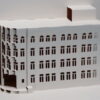
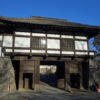
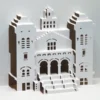
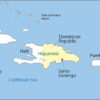

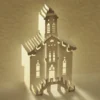

Recent Comments